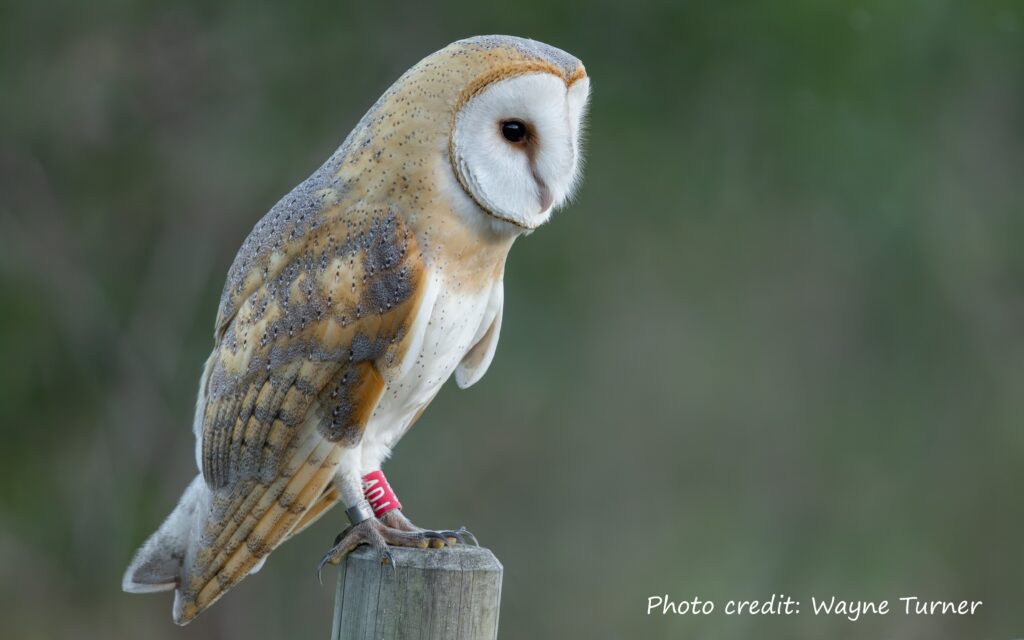
The Barn Owl colour ringing project has already provided valuable insights, including some notable sightings (see photograph) and unfortunate recoveries of birds that have perished.
The main aim of this project is to better understand Barn Owl chick dispersal, which is generally believed to be relatively limited, with most movements falling between 9 and 14 km from their natal sites. However, the first year of a Barn Owl’s life is particularly perilous, with studies indicating that around 70% of juveniles do not survive beyond their first year. Many face significant threats after dispersal, which is evident from our findings.
Summary of Results Since August 2024:
Sightings:
-
- 4 sightings have been reported:
-
-
- Two birds were observed fledging and hunting near their nest boxes, eventually dispersing when they became proficient hunters.
- One chick, ringed near Burton Mill Pond, was later spotted near Lavington, a 5 km journey.
- Another Barn Owl, ringed on 21st June near Cranleigh, was seen at Beeding Brooks on 17th August, marking an impressive 40 km movement. Female ADJ, see image.
-
Recoveries:
-
- 7 recoveries have been recorded, highlighting some of the key threats Barn Owls face:
-
-
- 2 road traffic accidents, both within 2 to 4 km of their natal sites, show how vulnerable young owls are to collisions, especially when hunting low over roads.
- 2 electrocution incidents on power lines, 3 to 4 km from natal sites, further emphasize the danger of human infrastructure.
- 3 unknown causes, with 2 of the birds later found predated. One of these, a chick ringed on 12th July near Storrington, was recovered on 11th October at Sandy Point Nature Reserve on Hayling Island, having travelled 46 km.
-
These incidents underscore the numerous dangers young Barn Owls face, including collision with road or rail traffic and electrocution which are the leading causes of mortality during the vulnerable first year after fledging. Other significant threats include accidental drowning in uncovered cattle troughs and the ingestion of poisoned rodents, which can lead to secondary poisoning and death.
Reporting Sightings:
As winter approaches and prey becomes scarcer, Barn Owls will likely become more active during daylight hours to compensate for the reduced availability of food. This increased daytime activity presents greater opportunities for sightings. We encourage everyone to keep an eye out for colour-ringed Barn Owls, which can be identified by a red ring with white letters on their left leg. If you spot one, please report it to us at info@sussexbarnowlgroup.org